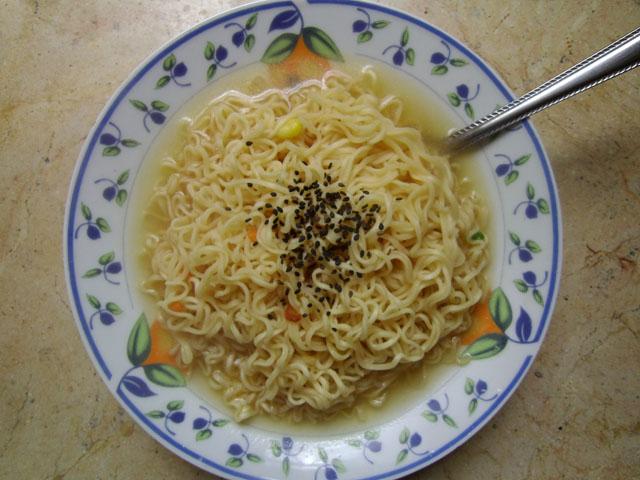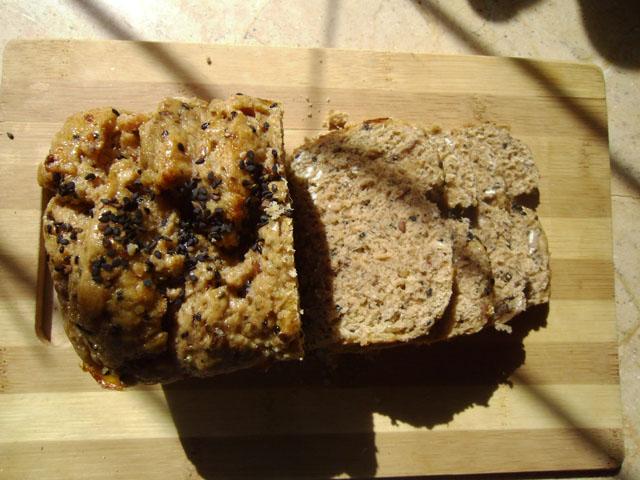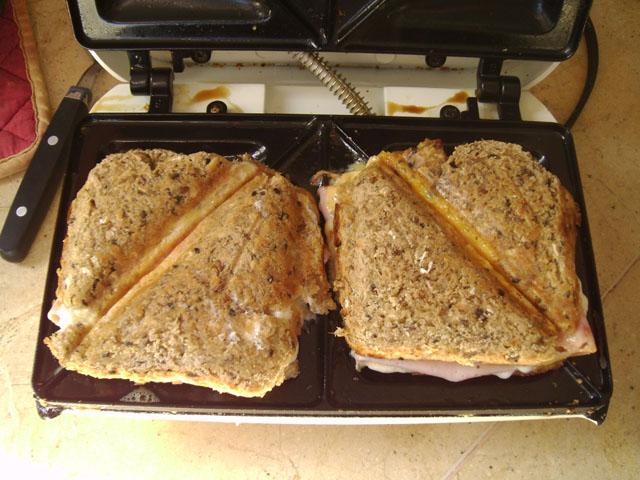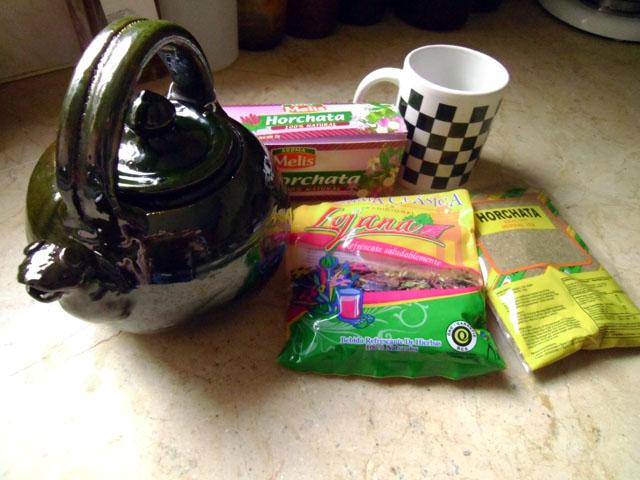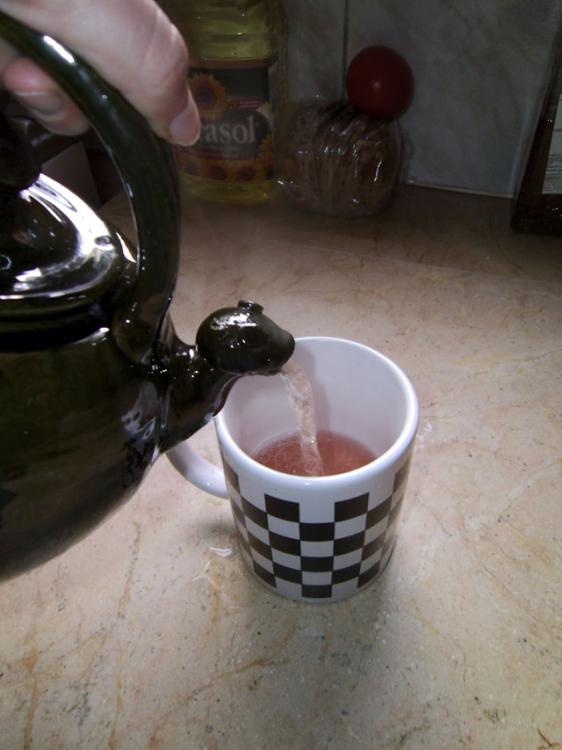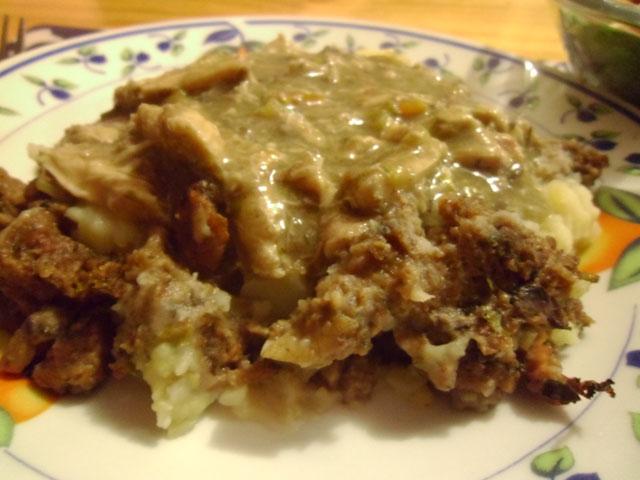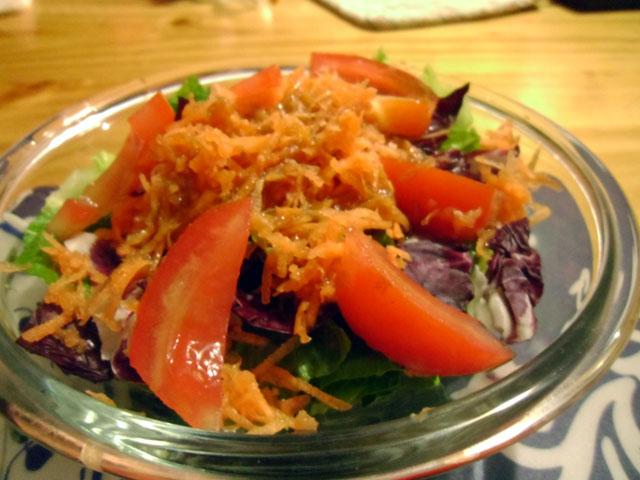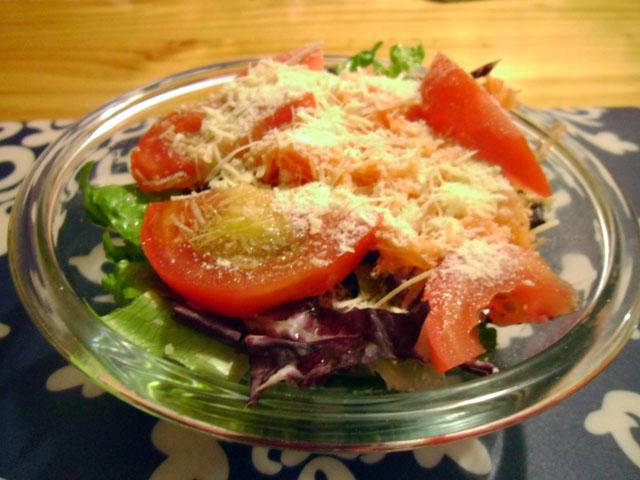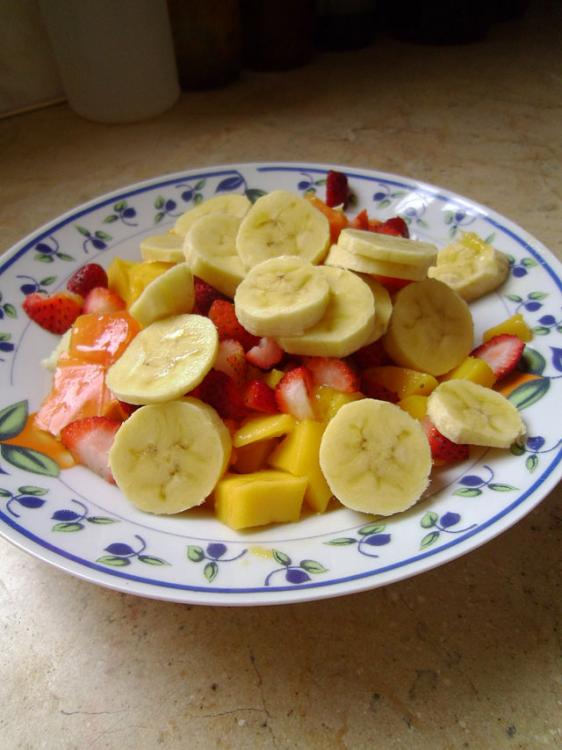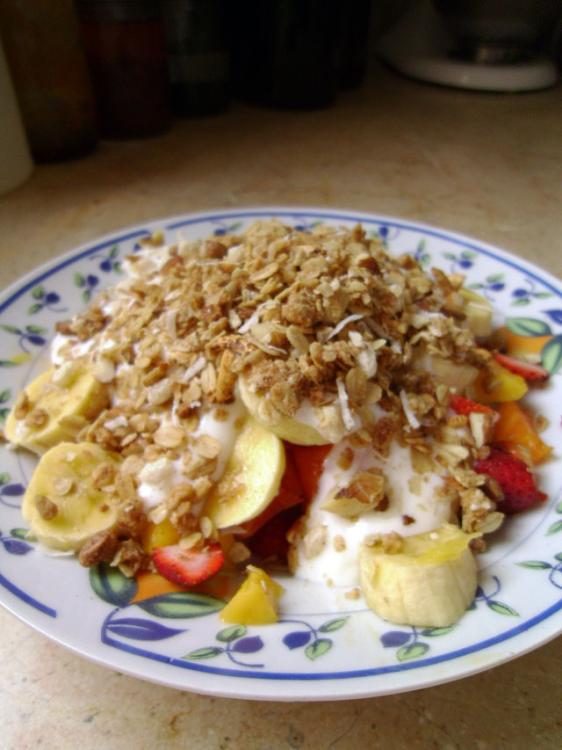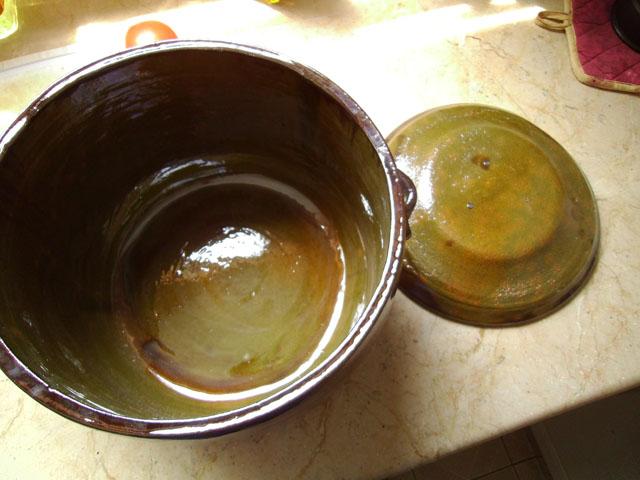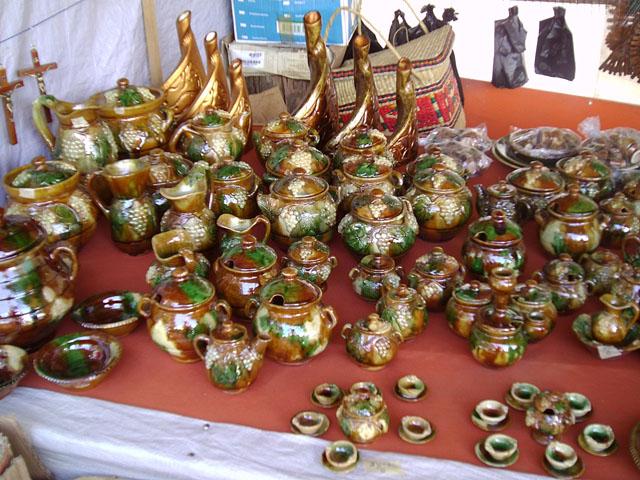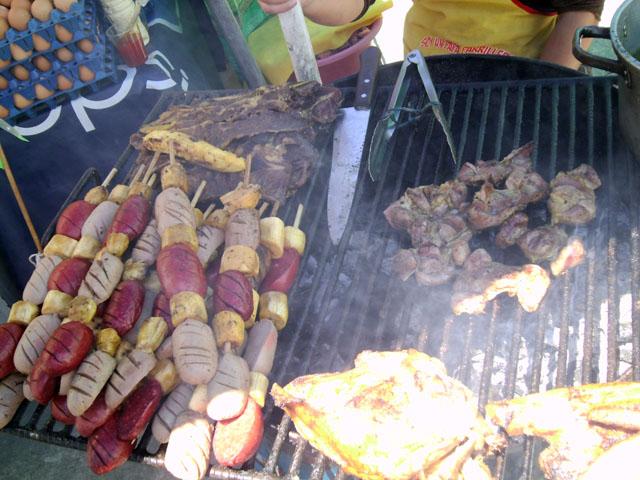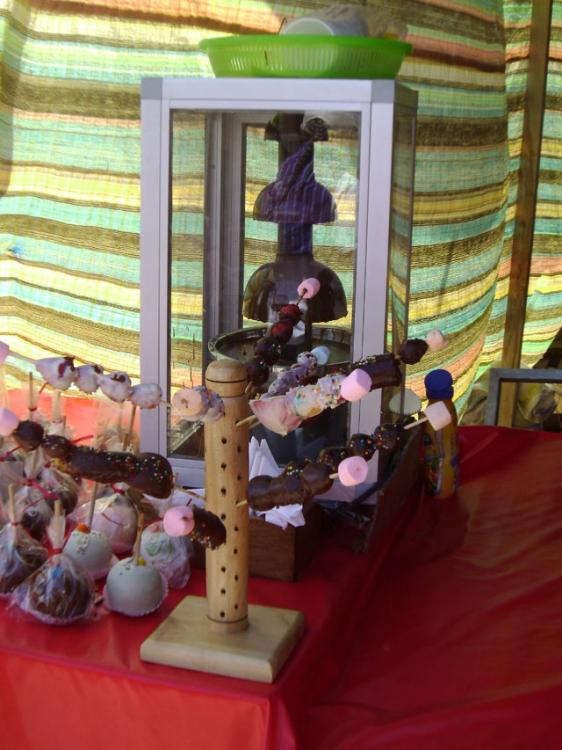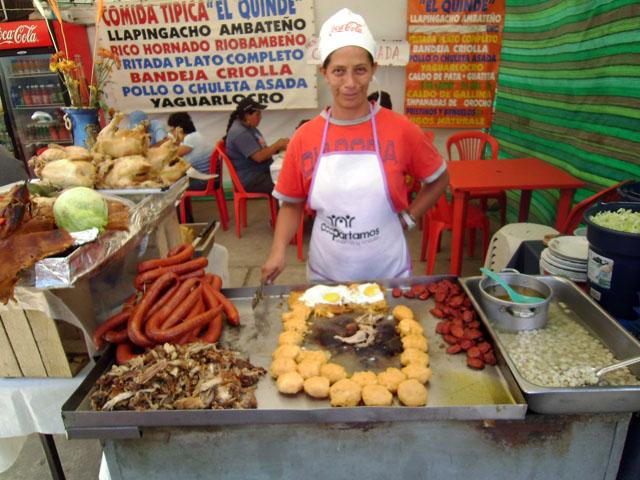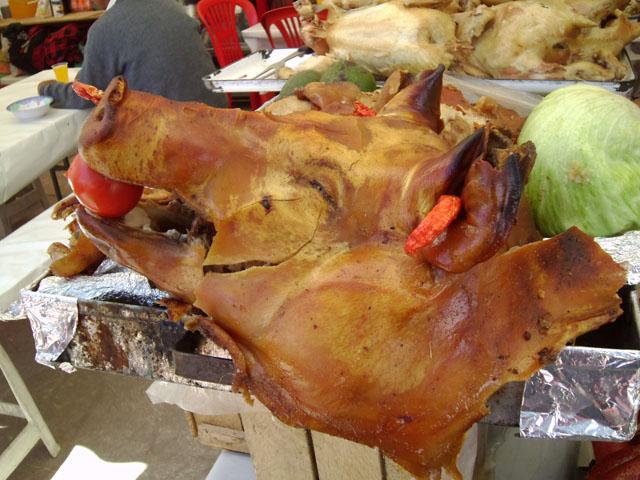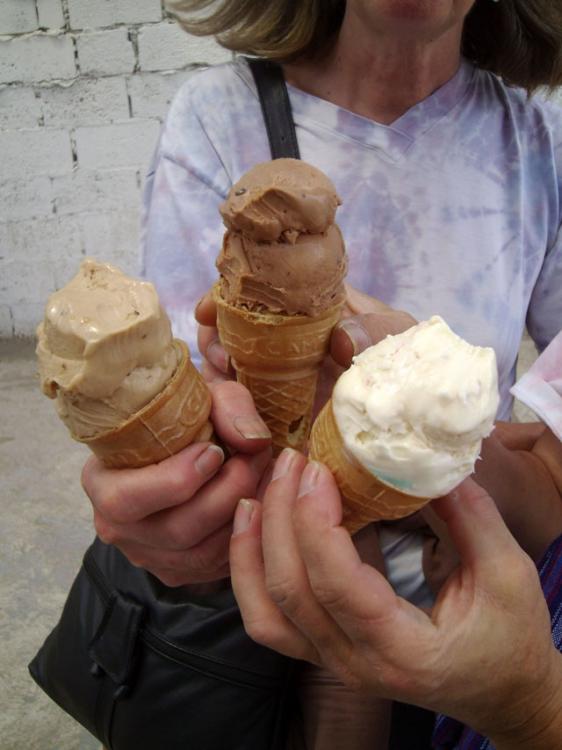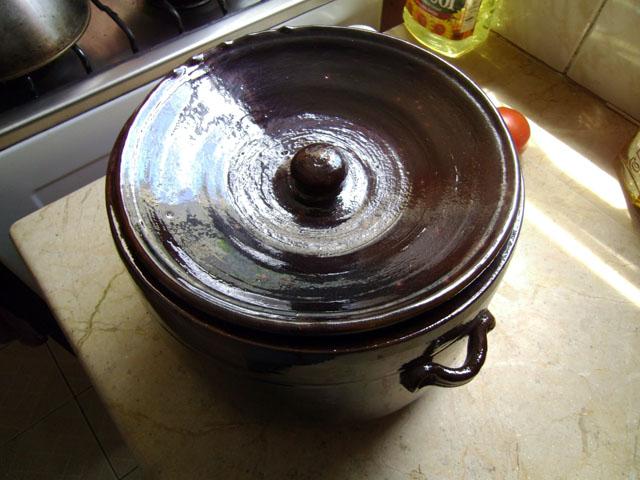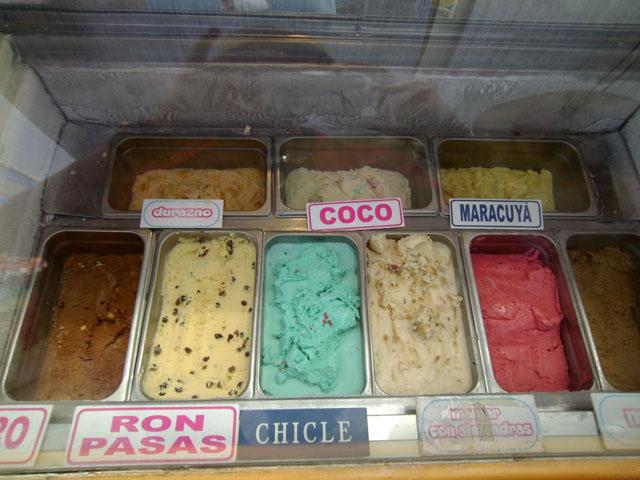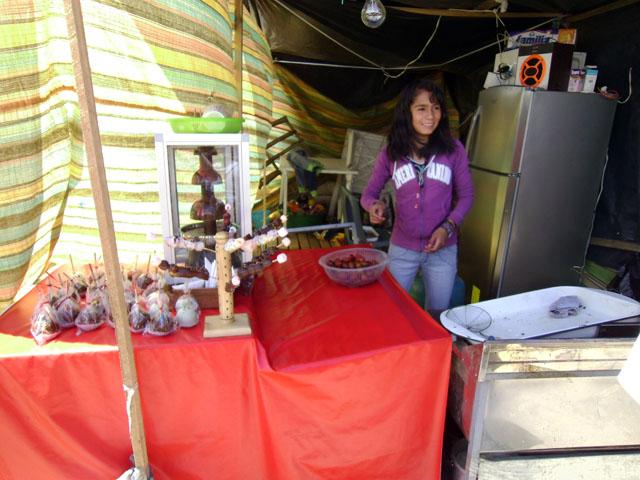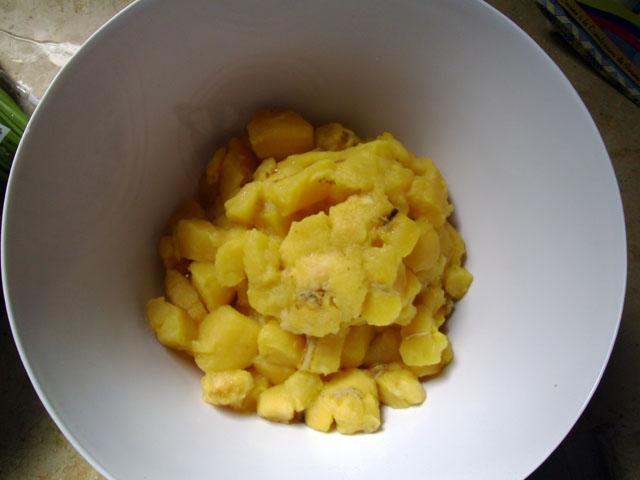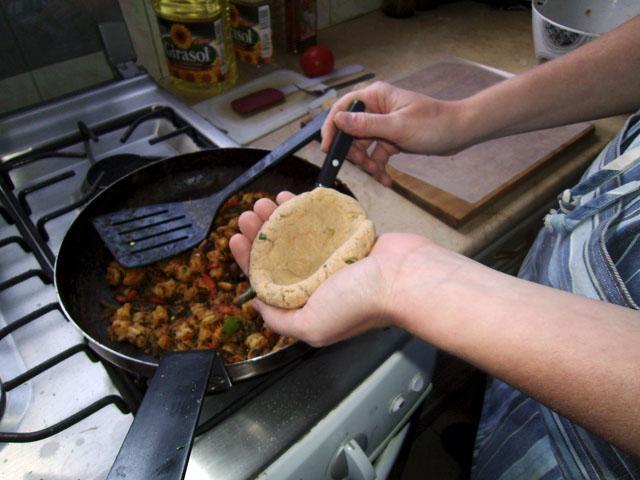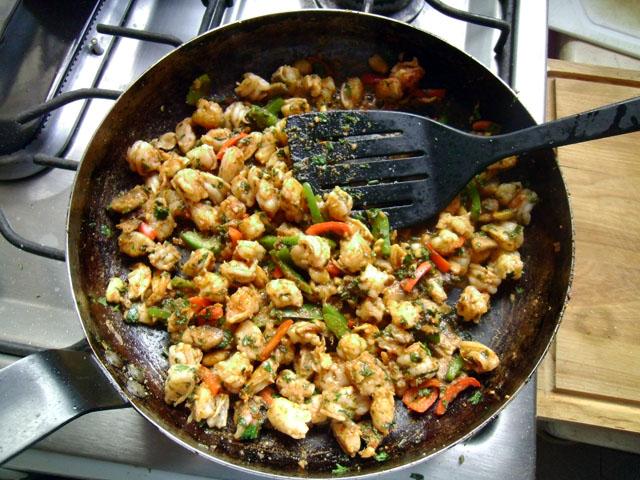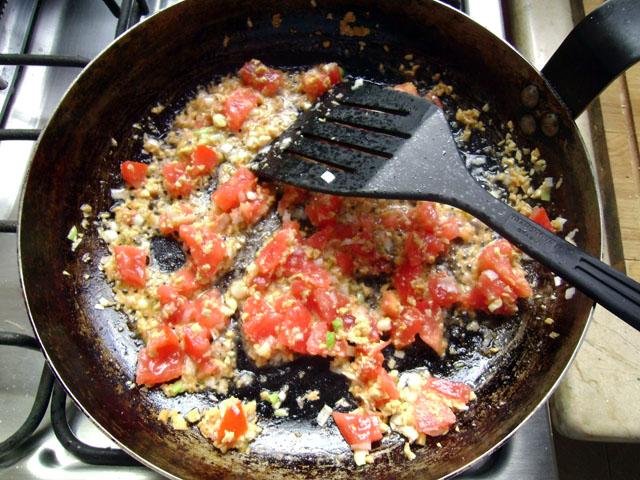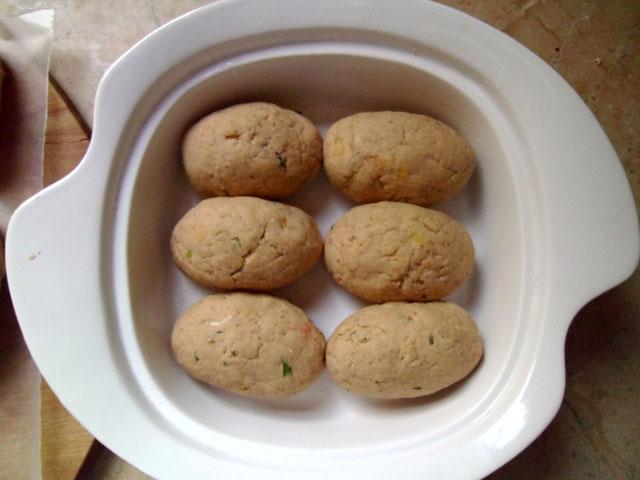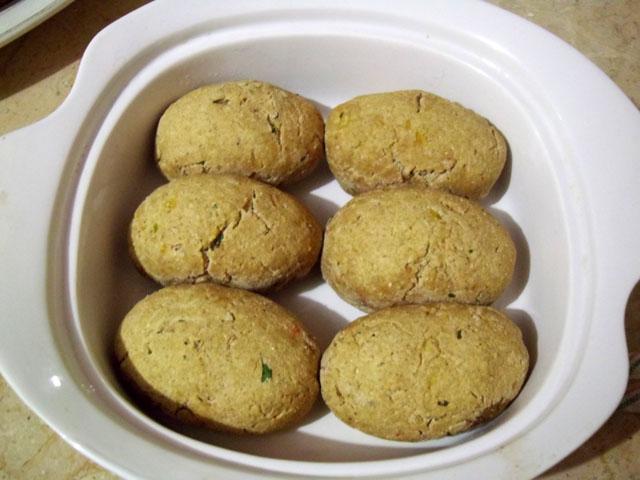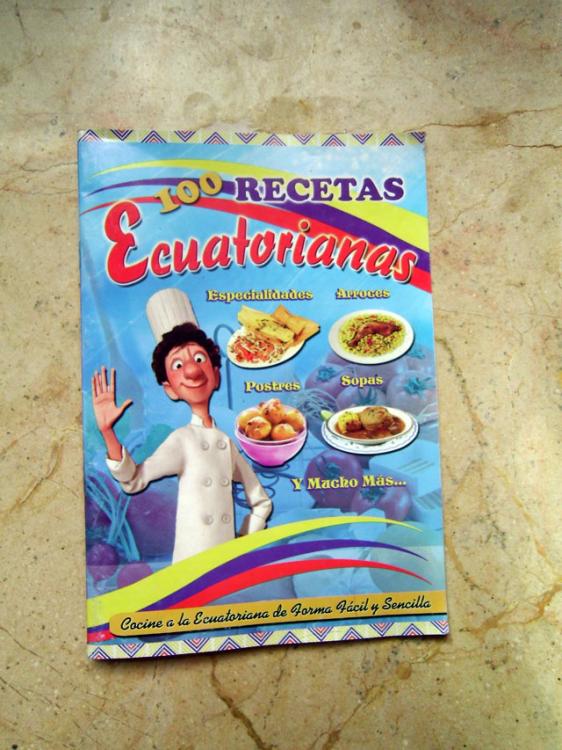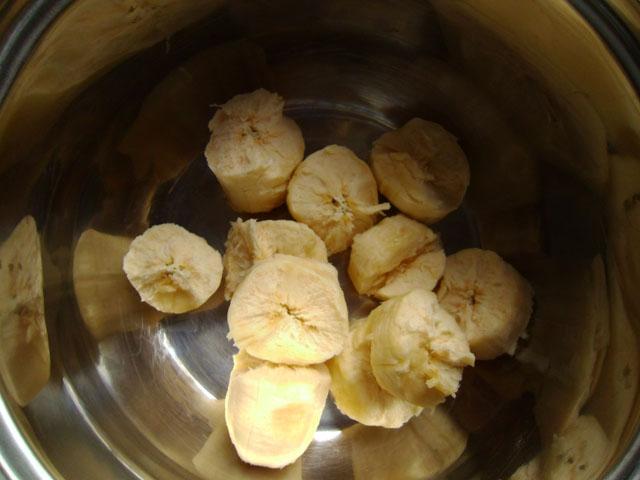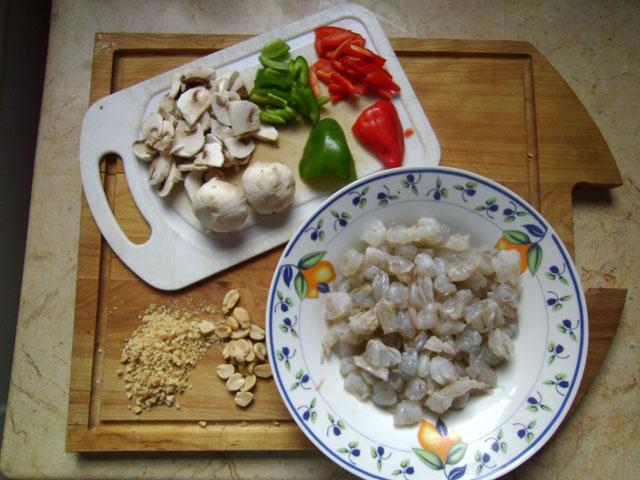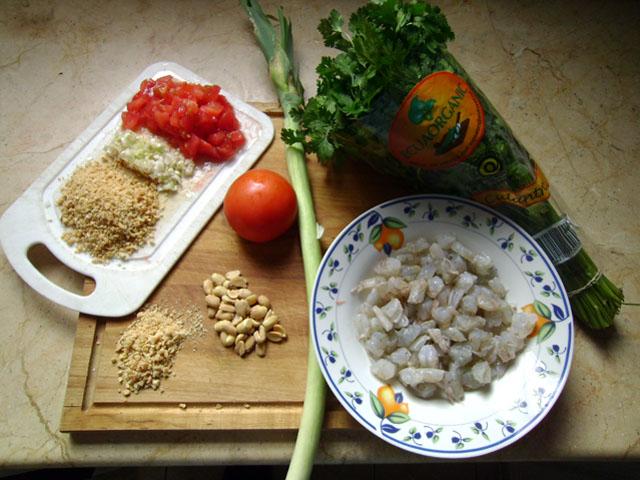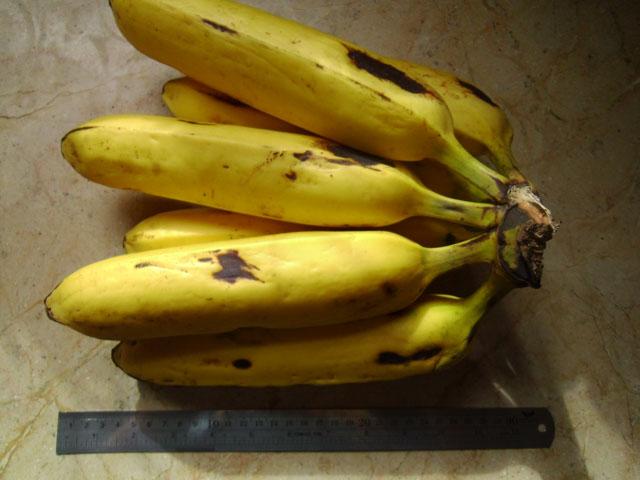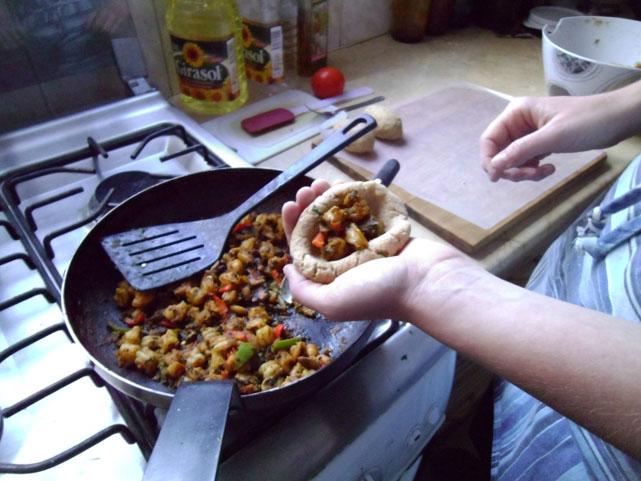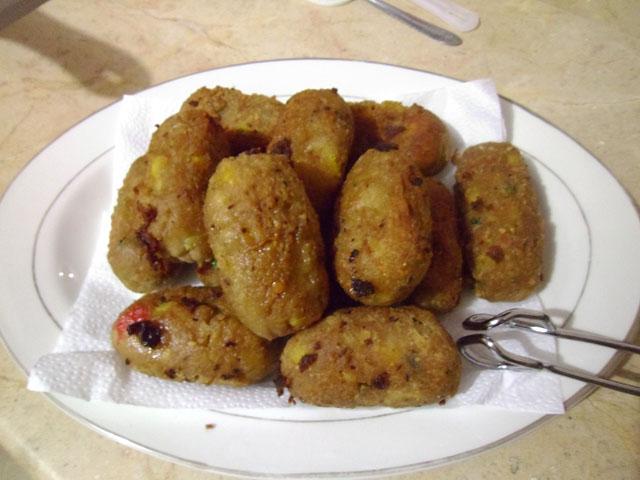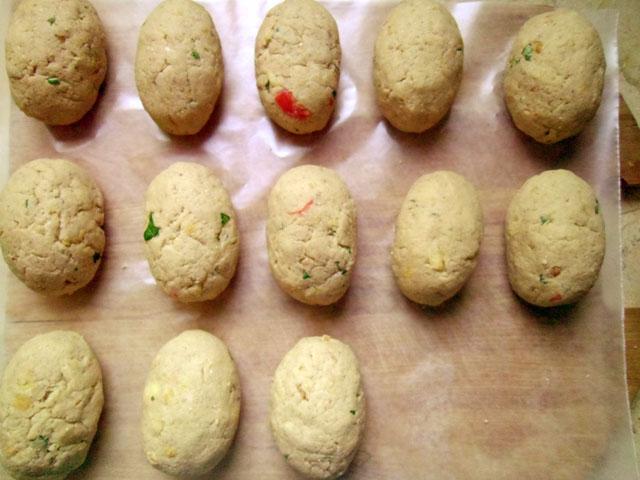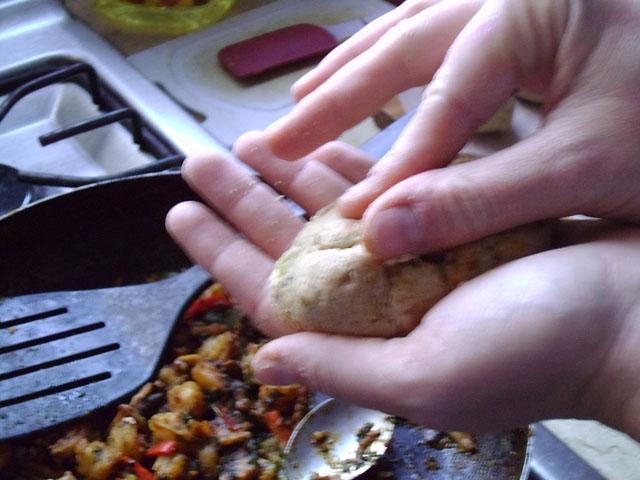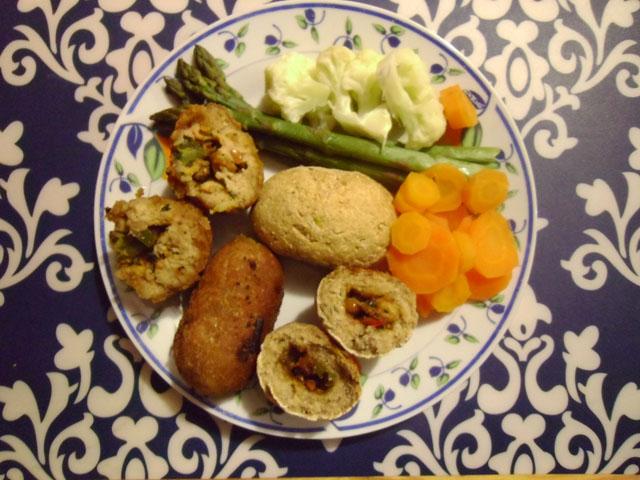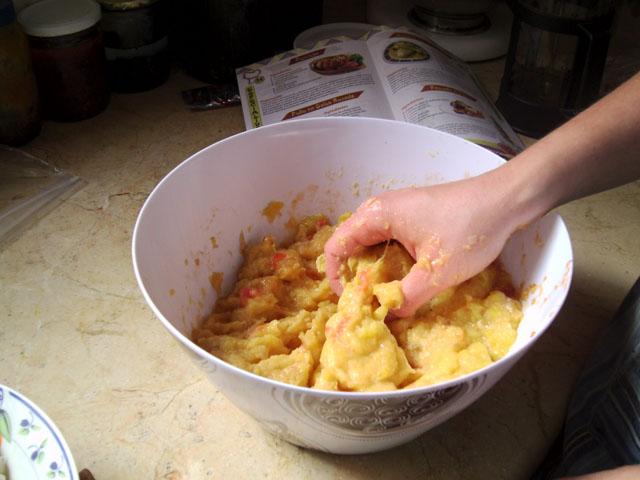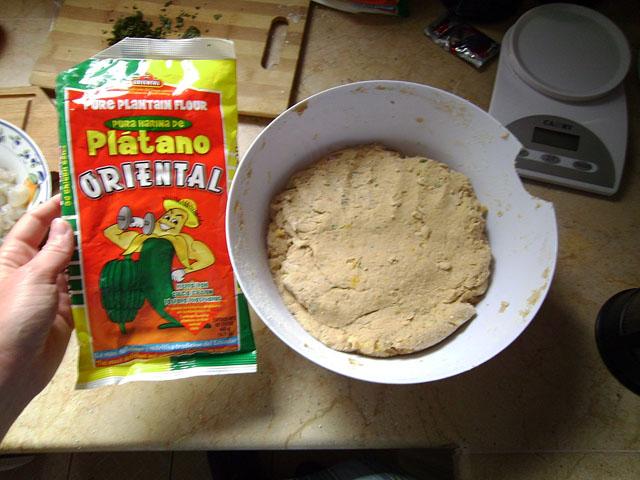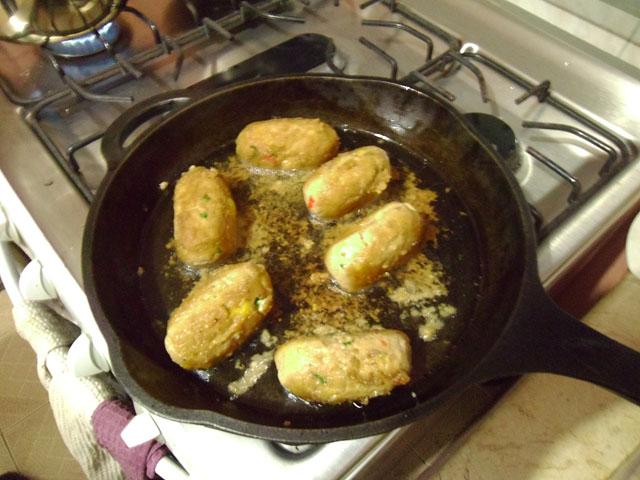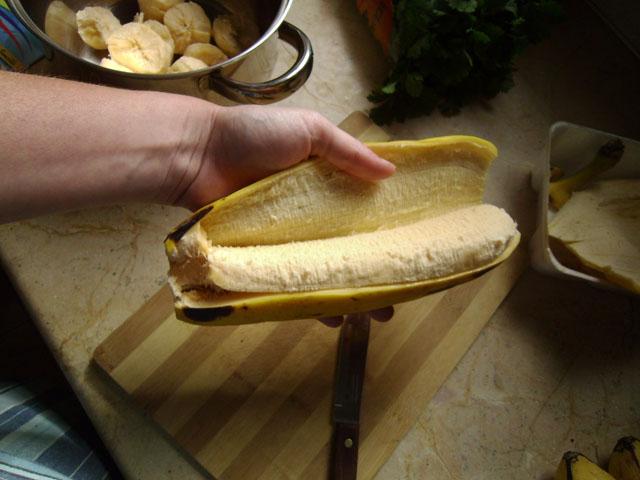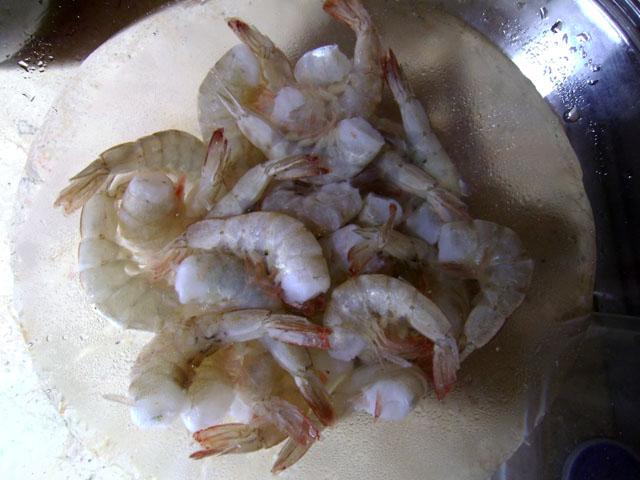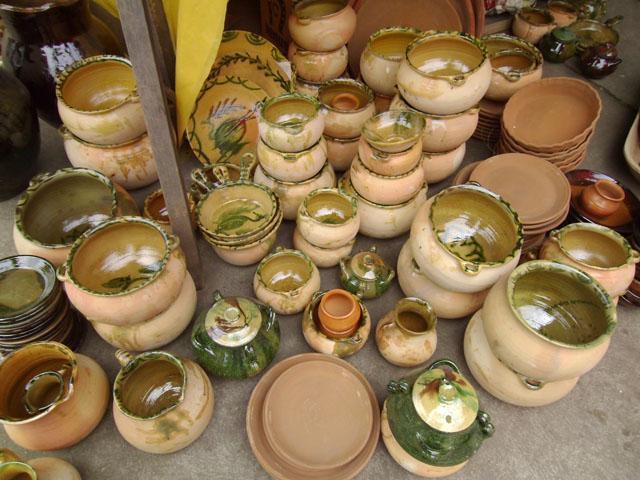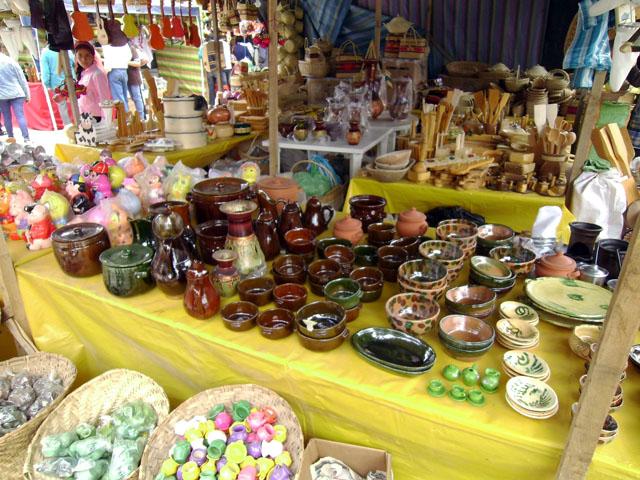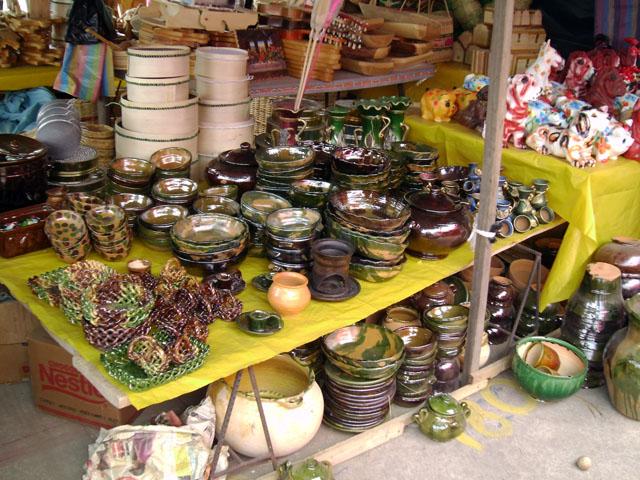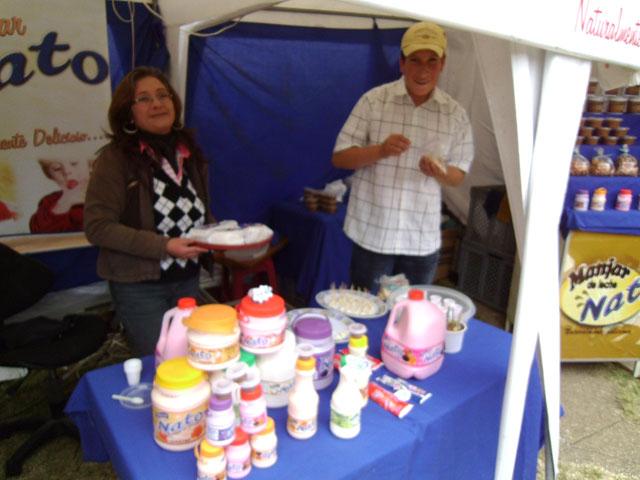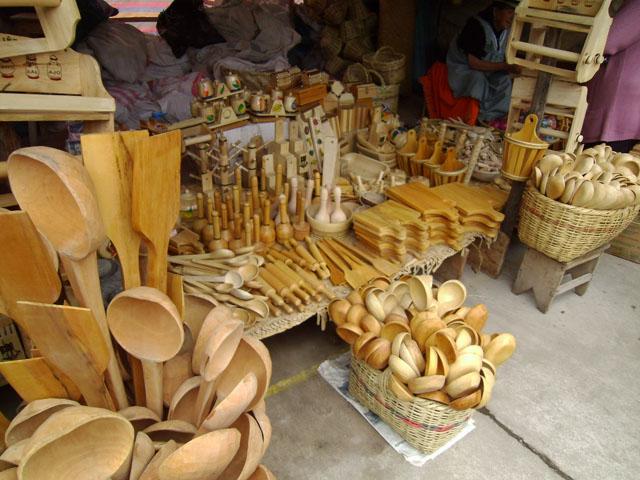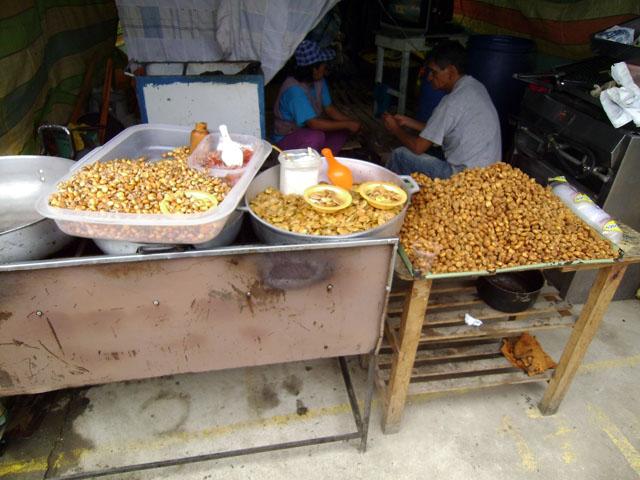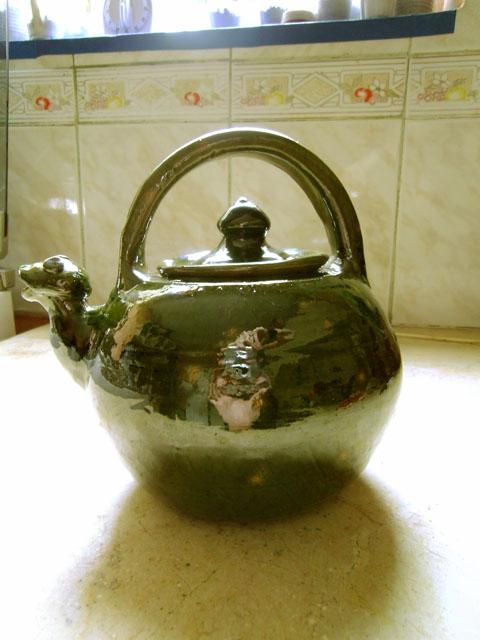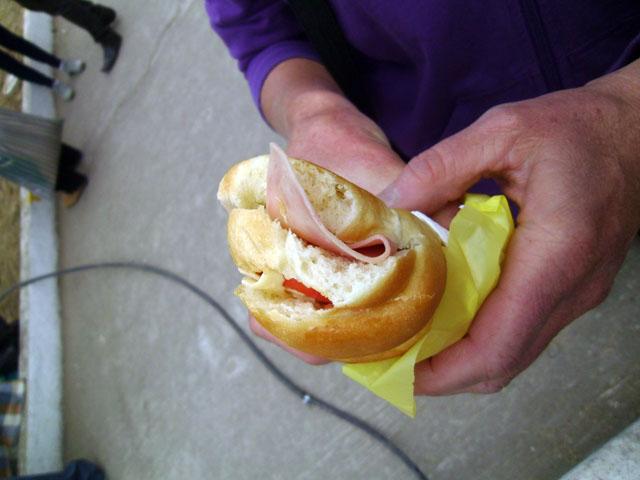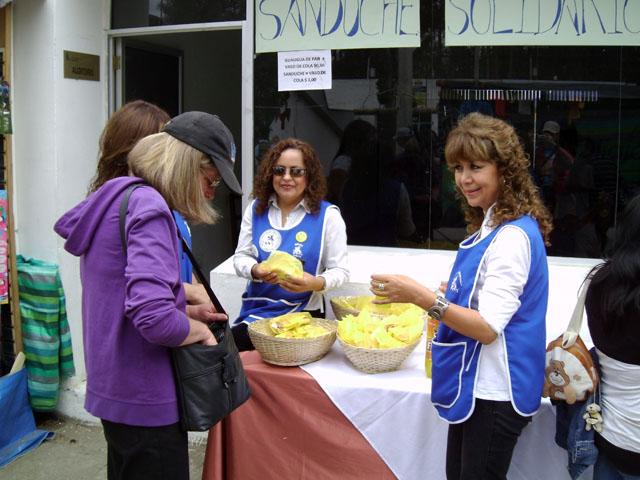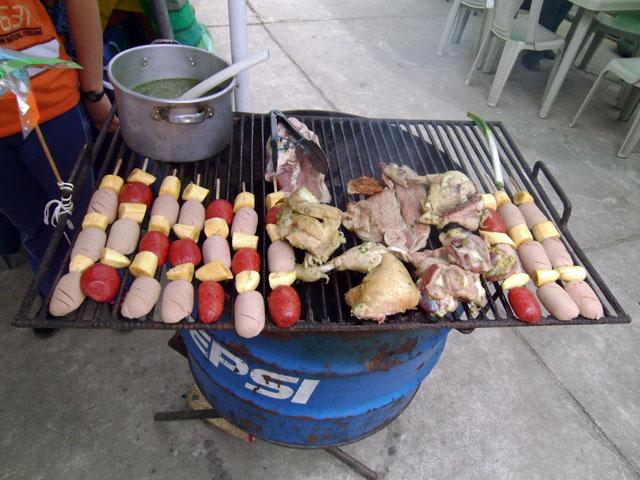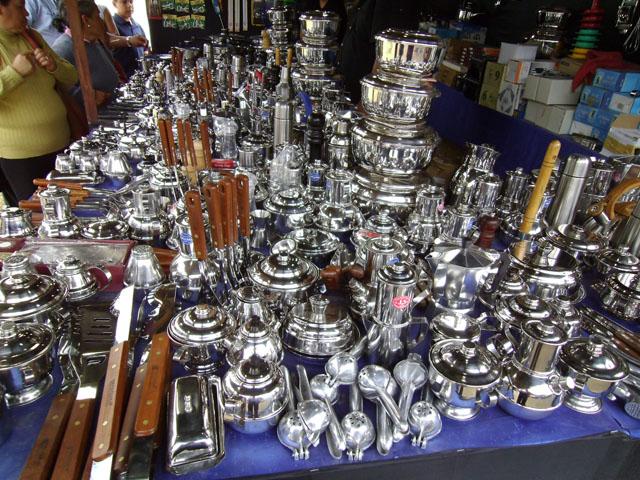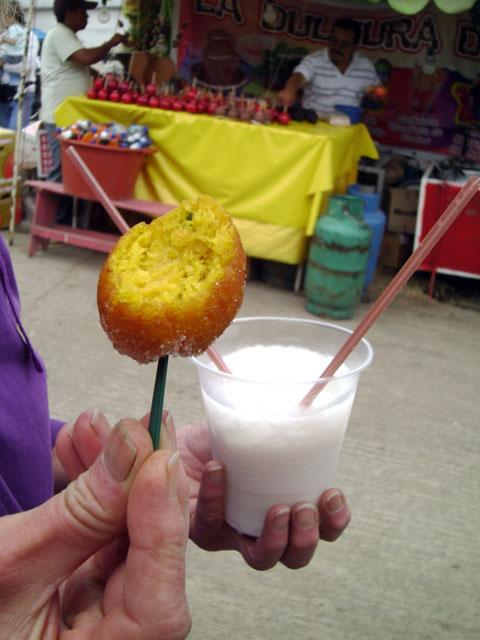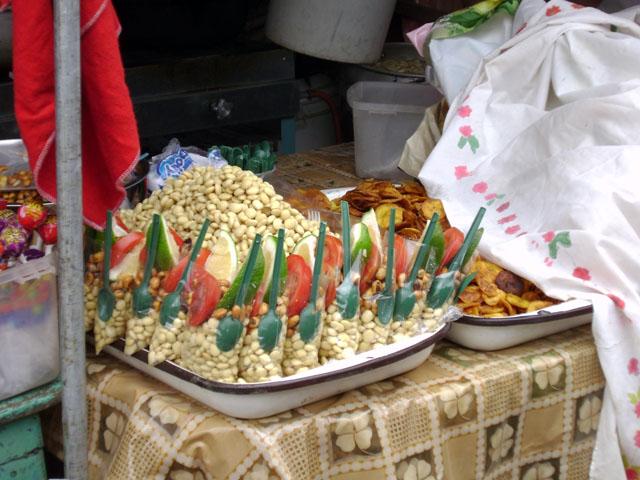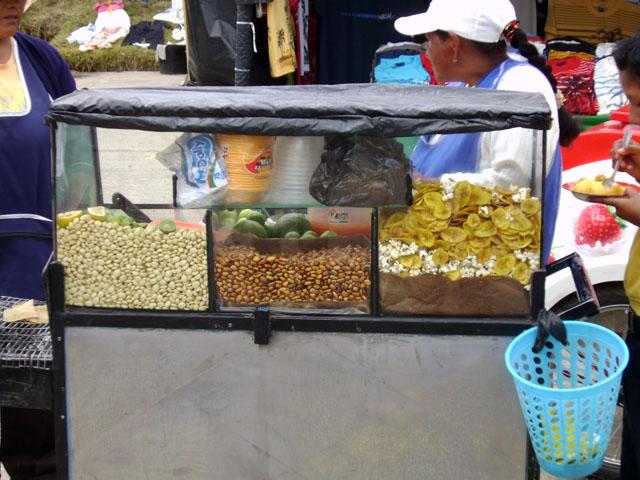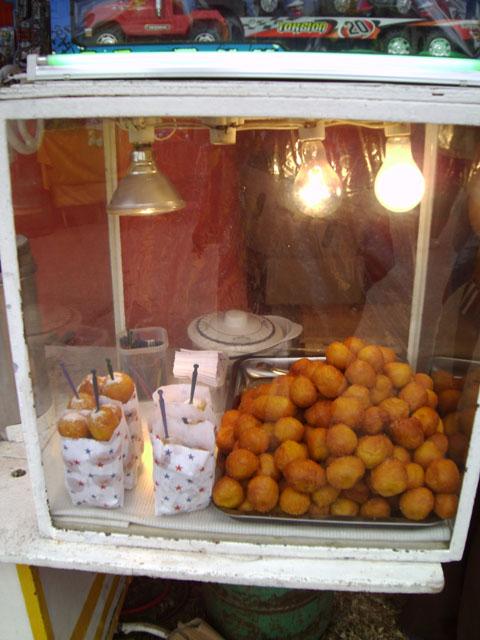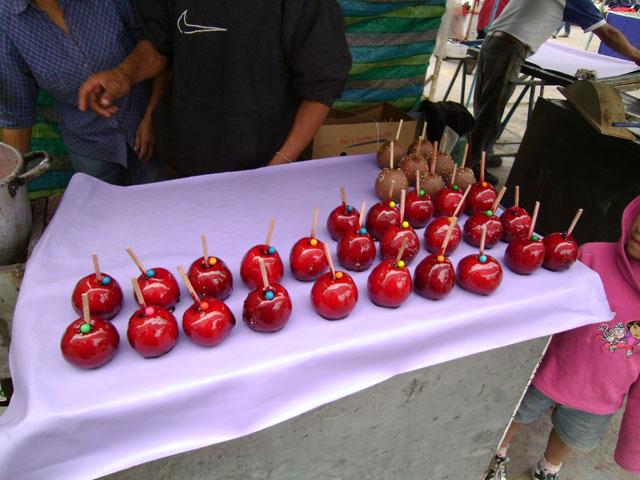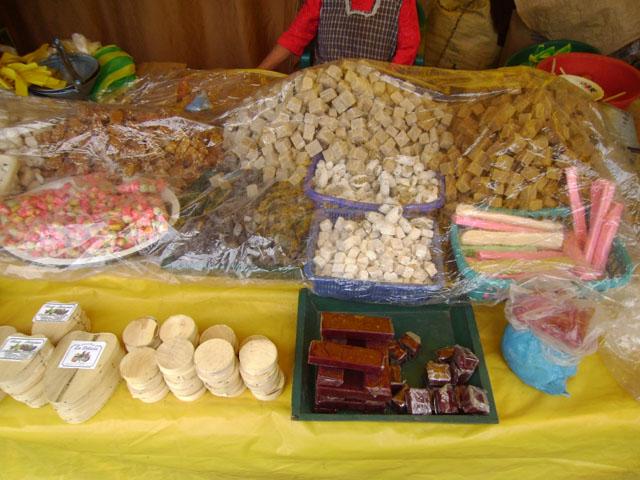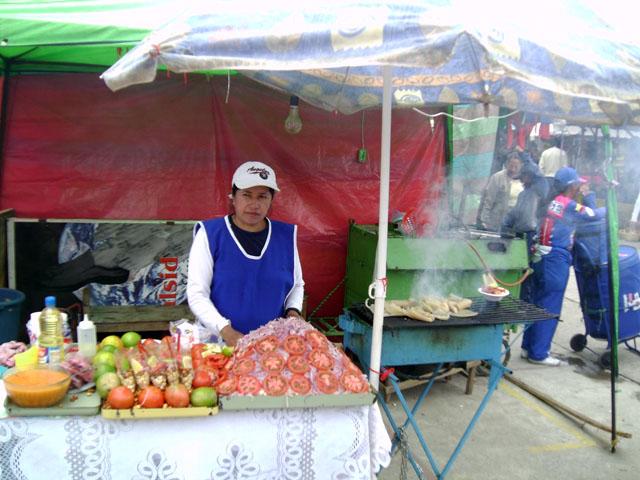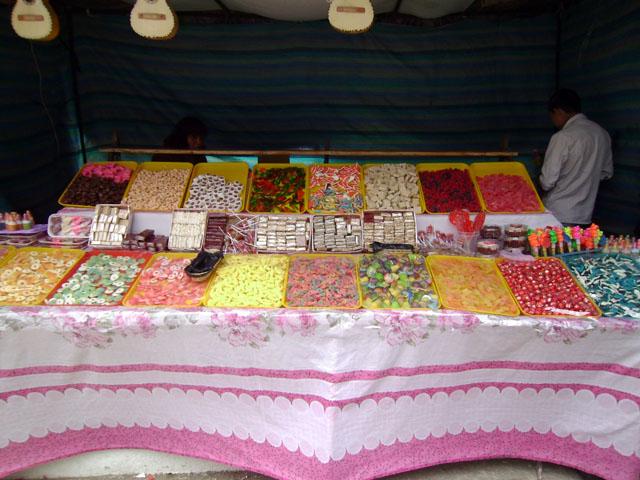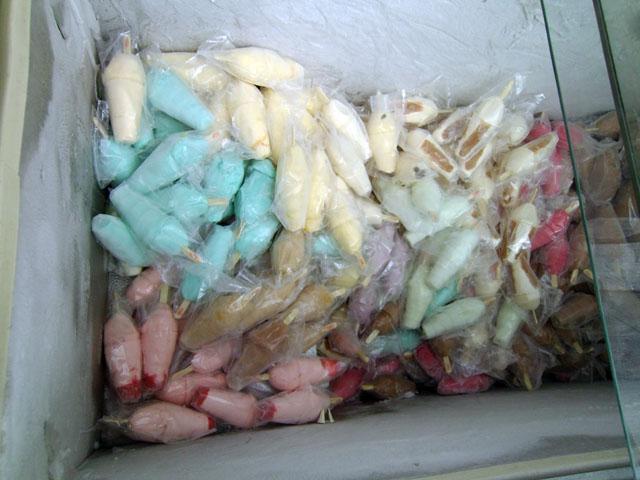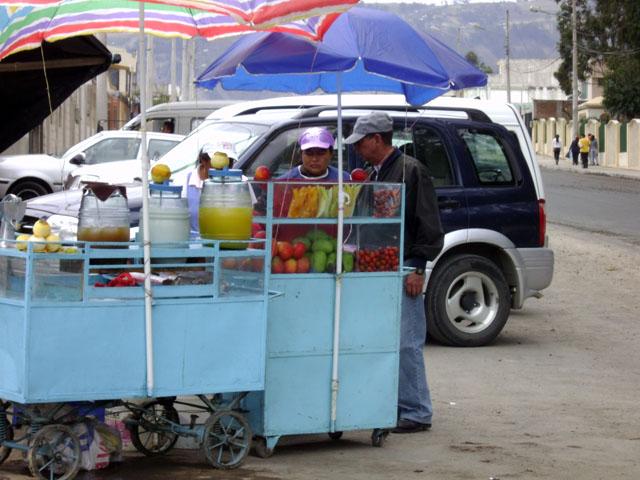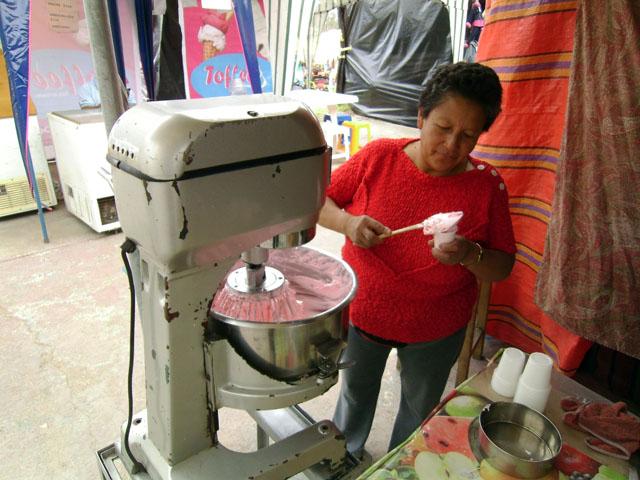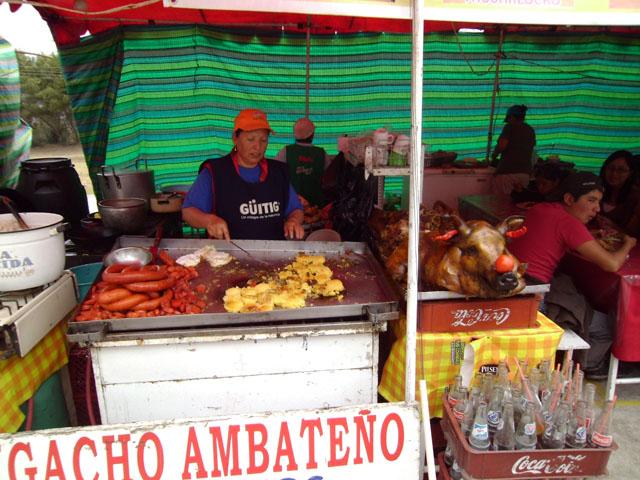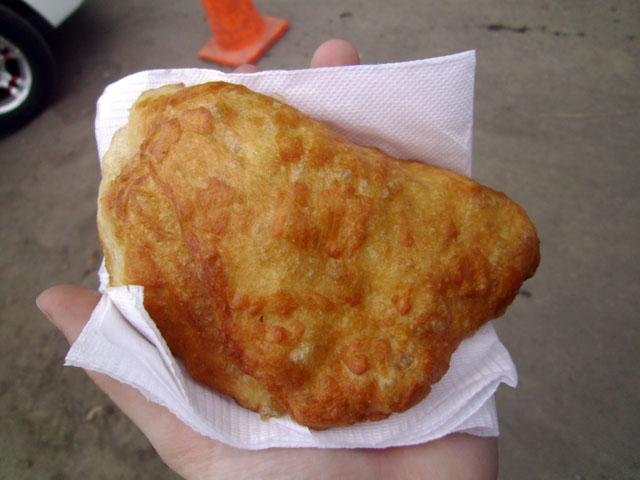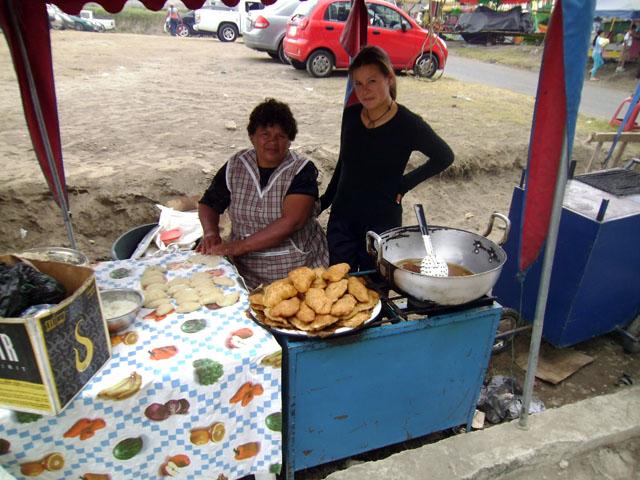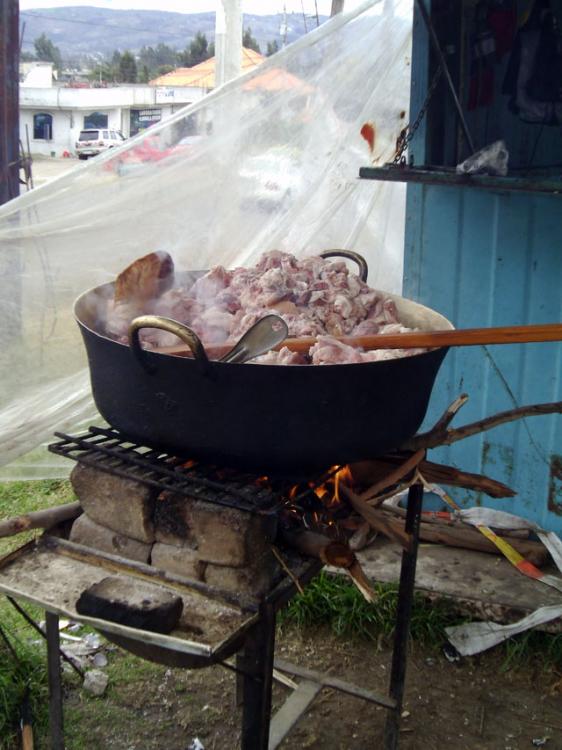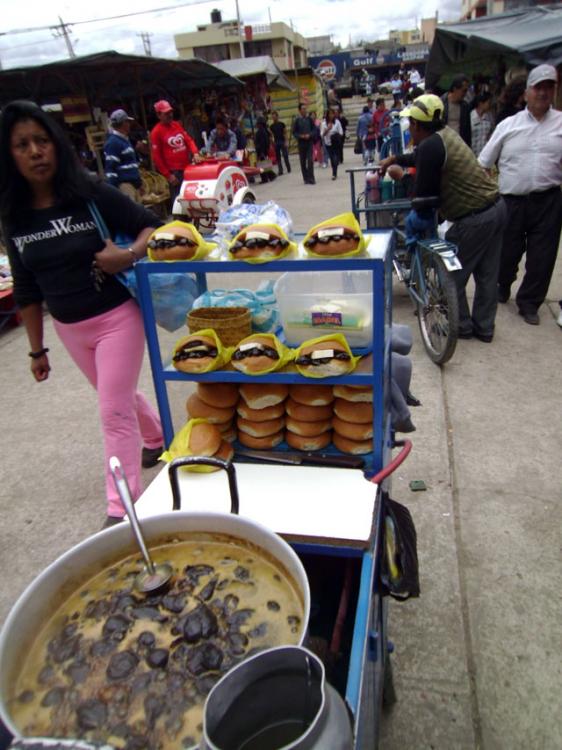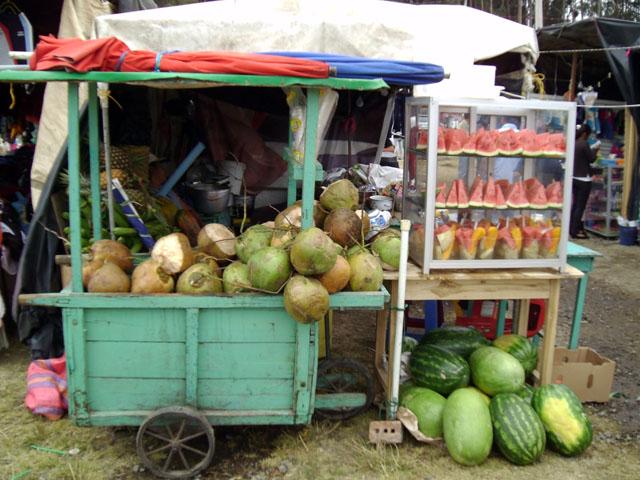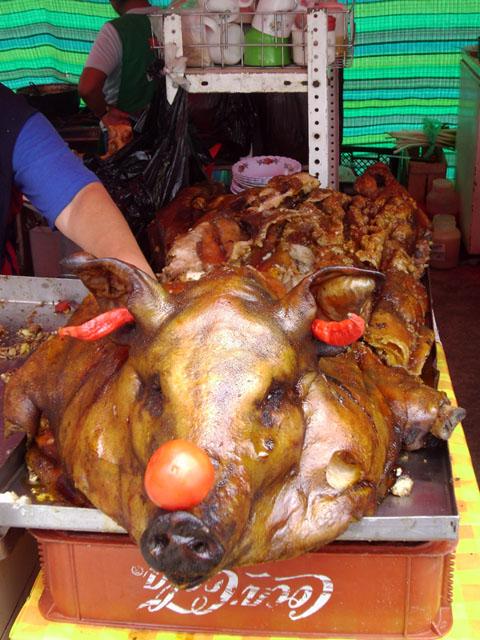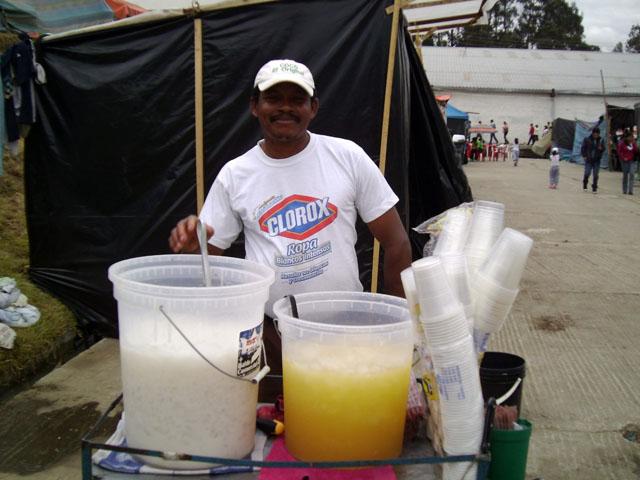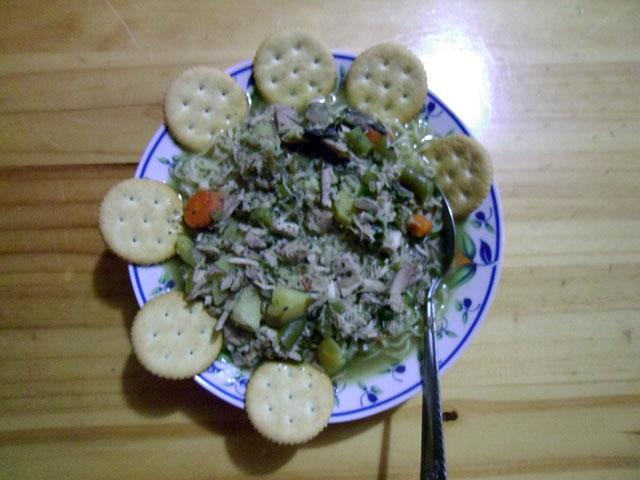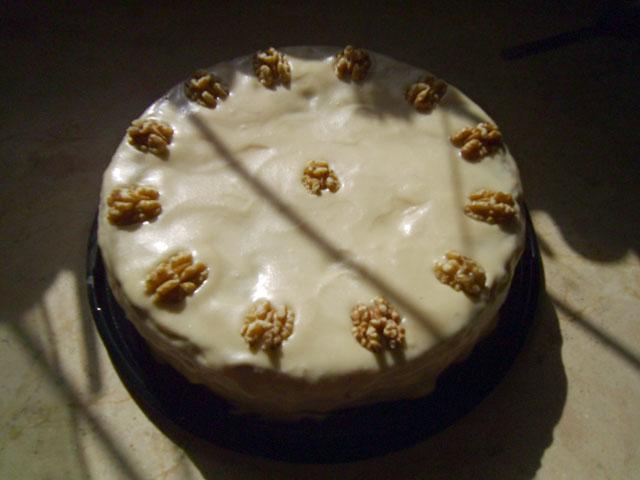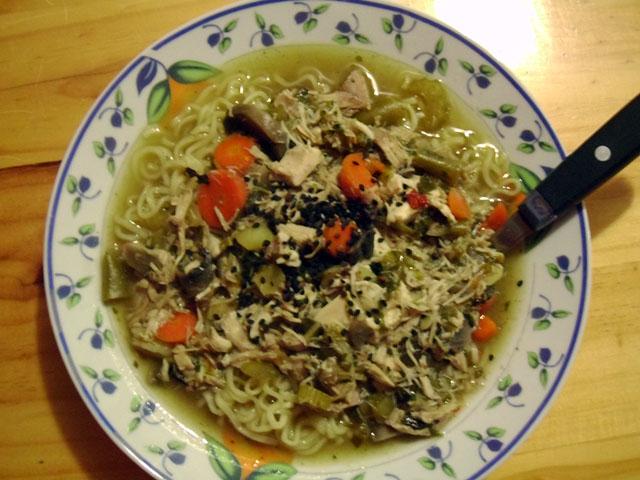-
Posts
2,383 -
Joined
-
Last visited
Content Type
Profiles
Forums
Store
Help Articles
Everything posted by Panaderia Canadiense
-
In season, there are up to 150 varieties at market, of which 15-20 are considered "standards" - and then there are the non-potato traditional tubers as well (Ullcu, Melloco, Mashua, Camote). We're out of season at the moment (which is why I didn't show you potatoes in the blog last week), which means that Atahualpa and Oro Morado are the most common - and that's a geographical variance. If I were in Ibarra at market, I'd see a lot more Corazon Azul (blue heart), which are among my favourite potatoes, but Oro Morado would be absent.
-

eG Food Blog: Panaderia Canadiense (2011)
Panaderia Canadiense replied to a topic in Food Traditions & Culture
And with this, dear readers, I'm off into the rainy wilderness of market day once again, and shall leave the blogging of the coming week in somebody else's capable hands. This was great fun for me, and I'm glad you all enjoyed it as well. I shall definitely return next year to show you another slice of life here in Ecuador. Any of you who are serious about coming to visit should PM me - I'd love to show you around. Cheers, and happy eating! Beth -
Depends. Maine soil is quite rich, so potatoes grown there wouldn't develop the hairs in their search for nutrition. Here in the Andes, the most marginal of soils is where the spuds are planted, and they do develop hairs. There are also roots that chain tubers together, and these also leave scars in the harvesting process, particularly if the farmer is digging by hand (as is the standard here). This said, I've found they're a bigger problem on the Atahualpas and Criollos (red-skinned varieties) and almost absent on Oro Morado (purple skin, white flesh), Locro (yellow soup), and Chullo (yellow friers). I've also found accretions on some Mashua, Melloco, and Ullcu (native tubers). Maybe it comes down to soil type and how the potatoes are handled during and after harvest?
-

eG Food Blog: Panaderia Canadiense (2011)
Panaderia Canadiense replied to a topic in Food Traditions & Culture
Ah, the Gringo Tax. We are pretty much the only resident extranjeros (people from the exterior) in Ambato, besides a small group of missionaries who basically keep to themselves. This means that the vendors all know us and have come to the conclusion that we're Ambateños of lighter skin, which means that we pay the same price as nationals. In other towns, whether the Gringo Tax is levied depends on whether the vendors think you're a tourist - which will come down to how you dress, what you're carrying, and what kind of accent you've got in your Spanish. It will also come down to whether you're willing and ready to haggle - la rebaja is culturally ingrained and expected in many situations. I have often removed the Gringo Tax by simply asking, slightly scornfully in my flawless Lojano-accented Spanish, where the vendor thinks I'm from exactly, and sometimes I also ask what makes them think I speak English. Loja and El Oro provinces have large populations of tall, fair-haired Ecuadorians left over from Swiss mining concerns in the 40's and 50's - I easily pass for southern. It's all part of the game, which is both expected and enjoyed. Glancing through that article, there are a couple of other glaring problems - first of all, bus fares. Those are government regulated at $1 per hour of travel, and tourists pay the same rate as locals - if the author saw different fares being charged, it was to the elderly and students, who are entitled to a 50% discount. I was here when that article was written, and there was absolutely no price differential on the interprovincial busses - and if any of the companies tried it, their competition would have immediately alerted the transit police. Fare fixing is something that causes bus lines to go out of business. He's also mistaken about the long thin empanadas - those are a specialty of Pelileo, and are buckwheat bread filled with black Panela, which turns to a sticky molasses jam while the empanadas cook on their clay tablets. I regret to say that this week the empanada sellers had completely disappeared from the city - these are something I wanted to share with everybody. I'm left with the impression that the author must have really seemed to be a tourist, and that he knew absolutely nothing about the bargianing culture here. In almost all cases, if a walking or street vendor names a price that you think is too high, you can haggle with him to bring it down to the national price - it's part of the pleasure of shopping. This is especially true when you see one price charged to locals - you can often simply ask the seller outright why you're being taxed, and you'll get the national price. I haggle for just about everything at the markets (apart from vendors I know and return to, because they have good produce and don't treat me like a tourist), and certainly I haggle cuy. He was blatantly ripped off if he paid $20 for a whole cuy - the going rate in 2008-2009 in Cuenca was $10 for a whole cuy with a family-size amount of potatoes; $8 in Ambato for a superior cuy (although it seems he skipped the city, as most tourists do). -
I know exactly what rotuts is seeing - they're denser accretions of soil on the potato, not scales. Alls I can guess is that there were root hairs there before the spuds were pulled, and the teensy bit of potato sap that bleeds when those are removed cements the dirt on there. I usually scrape them off with a knife or a thumbnail.
-
If you can find it, try Zhumir Tacao. It's hands-down the best of the clear chocolate spirits; on the chocolate cream liqueur front, I'm very fond of a local brand called Loveisone, which is a bittersweet cream liqueur with very little sugar added, which comes in lovely amphorae. I have no idea on the availability of either in the exterior, though.
-

eG Food Blog: Panaderia Canadiense (2011)
Panaderia Canadiense replied to a topic in Food Traditions & Culture
Lunch today falls under the "gee, you're a huge lazybones today, Beth!" category. These are Lobster Thermidor flavoured instant ramen noodle packs. Not quite cheesey enough for me, but still quite tasty, and they do have little chunks of dehydrated lobster in the broth, which is a big plus. -

eG Food Blog: Panaderia Canadiense (2011)
Panaderia Canadiense replied to a topic in Food Traditions & Culture
Ah, but I'm 25 km distant. Tungurahua has never done more than rain ash on Ambato - we're three valley systems away from it, so lahar and lava flows are never a problem. When she's erupting, I don't visit anywhere closer than Pelileo - I'm also a big chicken! All in all, though, if I'm going to be afraid of a volcano, I'll be afraid of Cotopaxi. She's currently inactive, but is overdue for an eruption (the period appears to be about every 500 years), and when she goes the sky will be blackened and the rivers flow as mud, and I'll be trapped in Ambato until the eruption subsides. She's more on the scale of Mt. St. Helens when she erupts. Andie, there are remedies for altitude sickness here. While it's illegal in the US and Canada, Mate de Coca saved my life when I got here - have I mentioned I'm from about 500 feet above sea level, naturally? Mate de Coca cured my altitude sickness problems completely; I still drink it when I'm feeling fatigued but no longer rely on it to keep the headaches at bay. Of course, after 4 years in this rarified air, when I visit the beach I'm superwoman. However, on some trips I also get reverse soroche - I start to feel funny and get blinding headaches as the oxygen content of the air increases, and generally then I'll be reaching for the thermos. -

eG Food Blog: Panaderia Canadiense (2011)
Panaderia Canadiense replied to a topic in Food Traditions & Culture
Ah yes... Ecuadorian Horchata has absolutely nothing to do with Mexican Horchata - the former is 42 herbs and flowers, while the latter is a rice-based colada. The Ecuadorian one, as far as I can tell, originates in the highland province of Loja and is served both hot and cold. Lojanos say that a cup of Horchata a day keeps you out of the doctor's office for life, and they ought to know - Lojanos regularly live to 110 or so. Darienne, the most expensive part of Ecuador is getting here - and we're not even that much more expensive than Mexico, flying out of Toronto on Air Canada with a changeover in Bogota (which is how I go when I have to come back to Canada - fingers crossed, I won't have to!) -

eG Food Blog: Panaderia Canadiense (2011)
Panaderia Canadiense replied to a topic in Food Traditions & Culture
All apologies - I've been quite busy on the business end of my life of late, and so there haven't been updates since breakfast yesterday! So here goes - a day's eating compressed into a single post. I'd also like to talk a bit about the rather uniquely Ecuadorian practice of La Yapa. La Yapa is the little bit extra that vendors throw in to sweeten a deal - at markets, you can actually request it of vendors who you think might be shorting you a bit (¿Y la yapa?). It is often, but not always, a little more of whatever you're buying, but can also be a sample of something completely different - for example, on Monday when I bought passionfruits, the grannie threw in a ripe tomato as la yapa. Yesterday's lunch was an Ecuadorian staple snack - pressed sandwiches. Normally when one buys a fridge and stove, the store will throw in small appliances as La Yapa, and that's how I came by my sandwich press (and also my spare blender, pressure cooker, rice cooker, spare steam iron, and hand mixer). It's an absolute godsend! I can't imagine now how I managed to live without one for so long, because pressed sandwiches are on the whole much better than cold ones. My press is missing its lower handle (it overheated one day and it simply snapped off when I closed the press - that's what I get for wanting a hot sandwich on a 45 degree centigrade day!), so I'm actually also looking for a new one - it appears I'll be able to replace it for about $20 since I don't need anything fancy. Anyhoo - on with the sandwich! This was two cheese with wine-roasted turkey breast (I love my deli counter, I really do). The bread is the 7-grain I made last Sunday, which explains why I was toasting it - it gets a little overmoist as it ages (I blame the barley), and is simply better heated as it approaches the week mark. Accompanying the sandwich (which was delicious), was a nice pot of Horchata, a pleasant blended tisane from Loja that I've gone on about at length in the herbal tea thread. It was the first pot of tea in the new tortoise teapot, which performed admirably. Dinner was simple reheats - the remains of the roast chicken dinner, reconstituted here as hot chicken "sandwiches" over the remaining mashed potatoes and stuffing. Nothing terribly exciting, I'm afraid, but it was very tasty nonetheless. Salad on the side, of course - must have greens! I did mine with a simple balsamic vinagrette, and Mom decided on grated parmesan cheese. Which brings us around to... Sunday Brekkie, one more time. Today it was fruit salad, since we somehow managed to finish the week with a pineapple and mangoes still in the fridge! (This is a very rare occurrence - I blame the feriada and abundance of bread babies.) -

eG Food Blog: Panaderia Canadiense (2011)
Panaderia Canadiense replied to a topic in Food Traditions & Culture
The pictured fountain was running 75% cacao flor de amazonia chocolate, which is quite good. Others at the fair were on 65% cacao Arriba de El Oro and 65% cacao Fino de Aroma. Ecuador is one of the world's finest cocoa producers, and accordingly the citizenry is normally quite well educated and picky about their chocolate. Heidi, I bet your banana aversion comes from only having nasty, icky Cavendish and Gran Nain bananas easily available. You'll notice that I didn't buy anything of the sort at any of the markets I visited - it's because I detest the texture and flavour of those types. I'd reccomend looking for Manzano, Pisang Mas, Baby, Red/Rosado/Morado or Orinoco/Lemon bananas at your local ethnic markets. All of these have superior flavour and texture; Manzano, from Hawaii, is decidedly apple-influenced, while Pisang Mas and Baby (Malaysian and South American) are more like vanilla and tropical fruit, and the red-skinned types are the kings of banana - creamy, vanilla-chocolate hints, with a smooth, light banana finish. Orinoco (Venezuela) is more citrus-y. On the plantain front, if you're selecting green ones look for a minimum of blackened portions on the skin. Semimaduros should be uniformly yellow of skin but firm of texture when pressed gently (the same way you'd test an avocado.) Fully maduro plantains should have at least 40-50% black on the skins. The most available plantain in NorAm is French Horn, but if you're very lucky at the Oriental markets you'll find Saba, which are shorter and triangular. Saba are the Filipino ambrosia banana, and they're all-round fantastic. The Ecuadorian approach to banana is to use it out of normal context - Silk plantains, which are quite similar to Gran Nain (Chiquita bananas) are often sliced into savoury seafood soups, for example, where they provide a hit of sweetness to offset the richness of the soup. I'd also reccomend Maduro Frito, which I will make as part of tomorrow's dinner. This is ripe plantain fried until it caramelizes and gets all nice and crunchy on the outside. It's outstanding. (Wow, am I obsessed much with bananas? You bet. I'm the editor in chief of Bananas Quarterly, a magazine devoted to the fruit, for both amateur and professional growers.) -

eG Food Blog: Panaderia Canadiense (2011)
Panaderia Canadiense replied to a topic in Food Traditions & Culture
We're not done yet, folks - you've got me until the end of Sunday! Linda - absolutely chocolate fountains, wherever there's a uground outlet available. -
OMG, Jmahl! Conchas! Those are super tasty, and as far as I've been able glean they're Mangrove Oysters.
-
Huh. I've always had great luck with spicing my own - perhaps it comes down to infusion times and the kind of rum you start with. I've found that if I go overboard with the cinnamon I have to add about a teaspoon of molasses to the final rum to balance it. Tri2 - did you use vanilla beans at all in your infusions? That's usually the hint that's missing from home-cured spiced rums that's present in the commercial ones.
-
Any reason that you don't spice your own rum? Find even a sort of iffy gold rum and bosh in the spices of your choice, then let it age in the sunlight on your windowsill for a couple of weeks, strain, and enjoy. It might take a couple of bottles before you get the spices right for your palette, but then you've got the advantage of a blend that nobody else will have in their cabinets.....
-

eG Food Blog: Panaderia Canadiense (2011)
Panaderia Canadiense replied to a topic in Food Traditions & Culture
I dreamed about the bean pots, so it was back to the Feria again today. We were a bit later, which means of course that more vendors were open.... That means that the chocolate fountains were up and running. In the rack are chocolate covered Fresas (large strawberries), marshmallows, and ubos. It also means that there were potters anew - and if I had a million dollars, I'd have bought the full set of these. The food court was also up and running, which meant more lovely llapingachos, horneado, pinchos, and chicken parts on the grill. To the right of the cook in this first picture is Mote, something I haven't had a chance to explain until now. Mote is pressure-cooked alkalinized flint corn, and it's normally served with chincharron (not pictured) which are little chunks of salty, crunchy, caramelized piggy parts. Breakfast today was an ice-cream cone. This vendor sells handmade cream-based helados in a number of tempting flavours. Mom opted for Cafe Mokka (the light brown cone), Dad for Coconut (the white cone), and I indulged in Fererro, which is chocolate hazelnut cream with chocolate chips and roasted macadamia nuts (the dark cone.) In a word: Faboo. And I did buy a beanpot. Unfortunately the really nice green ones I was coveting yesterday had sold, but there was a happy ending - this one is unassuming burn earth freckle on the outside, and astounding green-cream inside. A steal at $11. -

eG Food Blog: Panaderia Canadiense (2011)
Panaderia Canadiense replied to a topic in Food Traditions & Culture
Would people be interested in a food tour? I'd be happy to set an itinerary - I've only shown you but a tiny slice of my adopted country..... -

eG Food Blog: Panaderia Canadiense (2011)
Panaderia Canadiense replied to a topic in Food Traditions & Culture
Up until now, folks, what you've seen me eat for dinner has been North American standards. I do also cook Ecuadorian! Last night's dinner was something I've been wanting to try making for quite some time: Corviche. I'm going to walk you through it, too, because this is something that can be made in the exterior. I've also been sorely neglecting the cuisine of the coastal provinces in this blog (next time I blog for y'all, it will be from the Ruta del Sol, so that you can see this) - Corviche is a specialty of the province of Esmeraldas. If you ask any random sample of 10 Ecuadorians where the best food in the country is, 9 of them will name somewhere on the north coast (the 10th will say "grandma's house.") This country is in love with seafood. Corviche is spicy seafood stuffed into sweet plantain dough and then baked or fried. The version I made last night was with blonde mangrove shrimp, because they're on special at the supermarket for $4.50 a pound. I used as a guideline for the dough and proportions of filling a small $1 cookbook that I bought on the bus about a month ago, specifically because it has the Corviche recipe in it. I love that in this country I can buy a cookbook on the bus if I so wish! (I can also buy fritada, cevichochos, chilenos, bags of fruit, fruit salads, and the best potato chips in the country on the interprovincial busses - the chips I can only get there!) Corviche is only ever as good as the plantains you base it on. I use a type called Platano Maqueño, which is available (so far as I can tell) only in Ecuador and Hawaii. Hawaiians know this plantain as Maoli Popo'ulu. Maqueños are huge and slightly sweeter than other plantains when ripe. Whichever plantain you use, it must be semimaduro (semi-ripe) for the dough to come out correctly. Peel 4 plantains and break them into chunks with your hands. The chunks go into a pot, and get covered with water and set on to boil until they turn golden. While that's happening, prepare your dough flavouring - finely chopped peanuts, leek, and chunks of red tomato. Also peel and devein your shrimp. Sautee the dough flavouring in a bit of oil until the leek glassifies and the tomatoes begin to melt away. Add to the cooked plantain mixture and mush it all up good with your hands. Because this is masa semimaduro, you'll need to add plantain flour to thicken the dough to a workable consistency - the amount you need will depend on how ripe your plantains were. This time round I used about 600-650 g. Allow the dough to rest. Meanwhile, prepare the filling. Cut each shrimp into 3-4 pieces, dice a few mushrooms, and cut some short strips of red and green pepper. Fry this up together with some spices. The cookbook tells me to use just cumin, fresh cilantro, salt, and pepper, but I want a spicier filling. So, I'm using cumin, oregano, garlic, aji powder, and parsely along with the fresh cilantro. Just towards the end, I'll also throw in some aji seeds for an extra kick, and I'll finish the fry with a shot of Zhumir to bring up all of the flavours and add that extra bit of umami. The dough is very sweet, and I feel that the filling should be both a textural and flavourful contrast - this is the Atacames philosophy of Corviche. (As opposed to, say, the Esmeraldas City philosophy, which says the filling should be sweet and the dough piquant.) Once the filling has cooled a bit (don't want to burn your hands!), start stuffing. A Corviche is formed by taking a ball of dough of the size that fits into your two closed hands (about the size of a raquetball), patting it into an indent, stuffing, and pinching closed. Like so: The finished Corviches are set aside to rest before cooking. I'm trying two different methods tonight: I'll bake 6 in an oiled casserole, and fry the remainder. The bakers went into the oven at 350F for 40 minutes. Meanwhile, the fryers were done in hot sunflower oil until they turned golden and crunchy. Finished Corviches: We ate these with an assortment of steamed veggies. Dee-lish! Baked Corviches have a firmer dough texture more similar to bread, while fried ones are crunchy on the outside and creamy towards the center. - Edited to put an attachment in its rightful place. -

eG Food Blog: Panaderia Canadiense (2011)
Panaderia Canadiense replied to a topic in Food Traditions & Culture
Sure, what we make is called Turron de Mani and Dulce de Mani. I'll have to dig in my binders for a recipe, but I imagine it's not much different than a standard Mexican-style palanqueta. Usually Ecuadorian versions have bits of candied ginger in them along with the nuts. -

eG Food Blog: Panaderia Canadiense (2011)
Panaderia Canadiense replied to a topic in Food Traditions & Culture
Linda, I'll torture you a bit more.... I forgot to add the pictures of some of the Raku ware! I'm really tempted to go back tomorrow and buy a tureen. -

eG Foodblogs: Coming Attractions
Panaderia Canadiense replied to a topic in Food Traditions & Culture
If that's Hoptown IPA, then the next blogger is from somewhere near Pleasanton, California.... -

eG Food Blog: Panaderia Canadiense (2011)
Panaderia Canadiense replied to a topic in Food Traditions & Culture
I am blessed with a fast metabolism, hence I can eat as much as I like of pretty much whatever I like, and as long as I maintain a bare minimum of exercise (ie walking to the corner store for milk, wandering around the Feria, etc) I stay the same shape. The lady in the purple top and ballcap is indeed my mother; I'm about the same shape as she is but a bit taller (6'). Fritada, when properly cooked, is bacon-caramel crunchy on the outside and soft and fatty on the inside. -

eG Food Blog: Panaderia Canadiense (2011)
Panaderia Canadiense replied to a topic in Food Traditions & Culture
Feria de Finados, Part II (apparently I can't have more than 20 attachments at any one time...) There are stands from local yogurt and cheese producers - Nola, from Pelileo (20 minutes east), were sampling their excellent Queso Fresco and Manjar. There was one booth of amazing stainless steel everythings, including personal-sized samovar-style teapots (Hassouni, you'll recognize these!) And there are some really astounding booths full of artesanal kitchen implements. In wood: And in raku-fired red clay (these are mainly artesans from Latacunga, 45 minutes north). I bought myself a new teapot in green freckle glaze from a granny who has been making them for more than 70 years. After that, it was time for something salty and crunchy - Chulpi (a particular type of white corn, toasted and crunchy) is one of my personal faves; this stand also offered salty toasted beans and maiz tostado. Mom was still hungry, so we shared a Solidarity Sandwich - the $1 pricetag goes to the search for a cancer cure among the medicinal plants of the Amazon. We were also too early for the Pinchos (kebabs), which are cooked over charcoal. -

eG Food Blog: Panaderia Canadiense (2011)
Panaderia Canadiense replied to a topic in Food Traditions & Culture
Today's brunch is brought to you by the Feria de Finados, a sort of fairground experience with vendors of food (this is where the city's street vendors have disappeared to), artesanally made kitchenwares, and other assorted stuff at low low prices! This only occurs during week of the dead and is more than worth visiting for the cart cuisine alone. We forwent breakfast in order to have a good appetite for the offerings. I began my munching with another delectable hot candied fig and cheese sandwich - and here's a better view of the cart and the cooking figs. Mom, who doesn't like figs so much (sacrilege!) opted instead for fresh coconut juice and Huevos Chilenos (Chilean Eggs), this country's answer to mini-donuts. Chilenos are orange-corn balls, deep-fried, and lightly sugared. There was an abundance of chochos (lupini beans) on offer, in various different formats. Here, they're offered with crunchy roasted beans and lime. And here, as Cevichochos with encebollado sauce, popcorn, chifles, and tostado. However, our next real stop was at the Bocadillo sellers. Bocadillo is a type of local candy made from panela - in essence, it's blocks of various grades made a bit softer, and often with nuts in it. I bought a pound of Bocadillo de Mani, which is soft blonde panela with peanuts ($1.50), as it's my favourite type. By the pound it's a much better deal, because a single 2-3 oz piece is sold for 25 cents. Candy apples and chocolate-coated apples and strawberries are also on offer. Further inwards were more traditional stands, and a whole Chancho Horneado (roast yearling pig) was on offer, along with more llapingachos and chorizo. Other grills offered Cuero (pigskin) with chochos and onion Gummy candy and turrón de maní are also popular here. Paletas (Ice cream on sticks) are common at Ferias; I was still into my savouries and so I didn't have one this time around. The town of Salcedo, 20 minutes north of Ambato, is famous for its Paletas. Also on offer is Espumilla, a whipped egg-white and sugar confection similar to soft meringue. We were too early to sample the Fritada (chunks of pork belly cooked in their own fat with panela), which is done over wood fires in giant brass cauldrons. However, the Empanadas de Viento were up and rolling, and very tasty! These are ''Breaded Wind'' - soft sweet dough around a tiny bit of crumbled sweet cheese, fried until they puff up and turn golden. This mother-daughter team have been in the Empanadas business for many years. And what street cart roundup would be complete without juice and fruit? -

eG Food Blog: Panaderia Canadiense (2011)
Panaderia Canadiense replied to a topic in Food Traditions & Culture
It makes sense that you can find freezer cuy in New Jersey, Sylvia - there's a huge expat Ecuadorian and Peruvian community in that state. I wonder- do you have the same "it's a pet" reaction to rabbit as well? I grew up eating bunny at Eastertime (yes, we have a tweaked sense of humour in this family), so when presented with a cuy for the first time I simply dug in and enjoyed it - even though the head they included on the plate gave me the heebie-jeebies a bit. I know why they did it, though - it's to prove that what's on the plate is actually a cuy and not some other similarly sized creature. The saying here is "gato por liebre" (cat for rabbit) when you're being sold a false bill of goods, but they do like to prove that you're eating what you ordered. Yesterday also saw a cake order - one of the families who bought Guaguas de Pan from me at the cemetery on Wednesday called me up and asked for a carrot cake. I'm always happy to oblige! Dinner was light leftovers, given how heavy lunch was. I should actually mention that Ecuador is very much a lunch culture - it's the biggest meal and it's meant to carry you almost right through to the next morning. This is why lunch is typically three courses, while few restaurants are actually open for dinner, which is typically bread and hot chocolate. So, here's a take on reheated chicken soup over ramen noodles, with a bit of black sesame on top by way of condimentation Dad prefers his with Salticas, a sort of Ritz-crackerish galletta.



